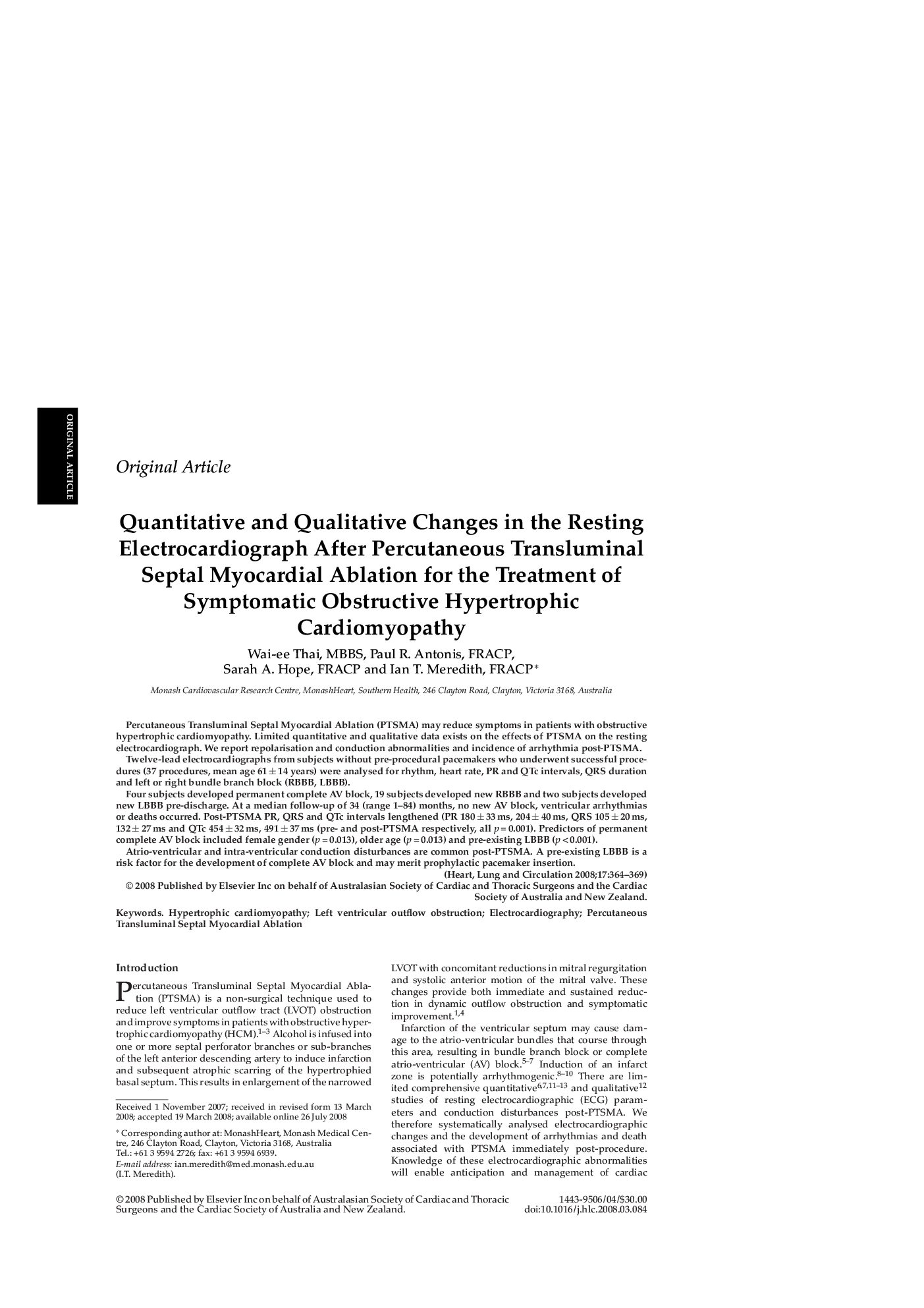| Article ID | Journal | Published Year | Pages | File Type |
|---|---|---|---|---|
| 2919715 | Heart, Lung and Circulation | 2008 | 6 Pages |
Percutaneous Transluminal Septal Myocardial Ablation (PTSMA) may reduce symptoms in patients with obstructive hypertrophic cardiomyopathy. Limited quantitative and qualitative data exists on the effects of PTSMA on the resting electrocardiograph. We report repolarisation and conduction abnormalities and incidence of arrhythmia post-PTSMA.Twelve-lead electrocardiographs from subjects without pre-procedural pacemakers who underwent successful procedures (37 procedures, mean age 61 ± 14 years) were analysed for rhythm, heart rate, PR and QTc intervals, QRS duration and left or right bundle branch block (RBBB, LBBB).Four subjects developed permanent complete AV block, 19 subjects developed new RBBB and two subjects developed new LBBB pre-discharge. At a median follow-up of 34 (range 1–84) months, no new AV block, ventricular arrhythmias or deaths occurred. Post-PTSMA PR, QRS and QTc intervals lengthened (PR 180 ± 33 ms, 204 ± 40 ms, QRS 105 ± 20 ms, 132 ± 27 ms and QTc 454 ± 32 ms, 491 ± 37 ms (pre- and post-PTSMA respectively, all p = 0.001). Predictors of permanent complete AV block included female gender (p = 0.013), older age (p = 0.013) and pre-existing LBBB (p < 0.001).Atrio-ventricular and intra-ventricular conduction disturbances are common post-PTSMA. A pre-existing LBBB is a risk factor for the development of complete AV block and may merit prophylactic pacemaker insertion.
